MakerBot Tough PLA and MakeShaper Filament Widen 3D Printing Material Options on MakerBot 3D Printers
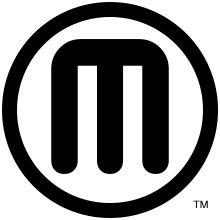 MakerBot has really been focusing on 3D printing materials recently, as it now makes up one of the largest segments of the desktop 3D printer market. We first heard about MakerBot’s new thermoplastic Tough PLA 3D printing filament a few months ago. The filament was announced in September, and now we’re learning more about this resilient, strong plastic that mimics many of the mechanical properties of ABS, while also offering up the reliability and high quality of PLA.
MakerBot has really been focusing on 3D printing materials recently, as it now makes up one of the largest segments of the desktop 3D printer market. We first heard about MakerBot’s new thermoplastic Tough PLA 3D printing filament a few months ago. The filament was announced in September, and now we’re learning more about this resilient, strong plastic that mimics many of the mechanical properties of ABS, while also offering up the reliability and high quality of PLA.
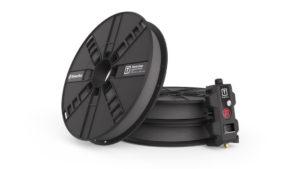 One of the company’s main goals is to streamline the process of design acceleration and prototype production for desktop 3D printers. MakerBot Tough PLA lets designers and engineers move beyond concept modeling and create durable, high-impact strength prototypes and fixtures. Under a tensile load, the MakerBot Tough PLA will deform elastically and return to its original shape before it hits peak strength. Past this peak, the material will exhibit a long plastic deformation range before breaking; in contrast, most PLA would have simply fractured.
One of the company’s main goals is to streamline the process of design acceleration and prototype production for desktop 3D printers. MakerBot Tough PLA lets designers and engineers move beyond concept modeling and create durable, high-impact strength prototypes and fixtures. Under a tensile load, the MakerBot Tough PLA will deform elastically and return to its original shape before it hits peak strength. Past this peak, the material will exhibit a long plastic deformation range before breaking; in contrast, most PLA would have simply fractured.
These mechanical properties make MakerBot Tough PLA a strong choice (pun intended) for prototyping various functional features, like living hinges, snap fits, interlocking parts, and precise, durable threaded features. Some of the MakerBot Tough PLA filament features are:
- Impact-resistant: it can withstand a severe impact-load better than PLA
- Longer plastic deformation: it experiences longer plastic deformation under a severe tensile load, when PLA would snap
- Machinable: it responds well to sanding, thread-tapping, and post-processing
- Greater tensile elongation: it offers greater tensile elongation under a tensile load than PLA
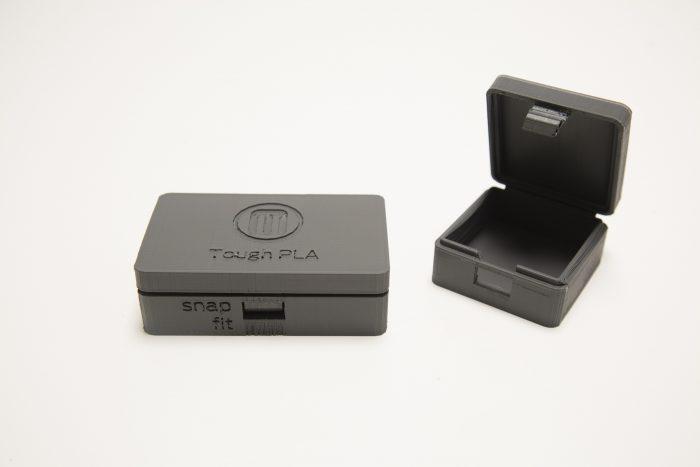 Exclusively sold as a bundle, MakerBot Tough PLA includes the Tough PLA Smart Extruder+ and three spools of Tough PLA Filament. The extruder is guaranteed to work for the life of the three spools. An important note: the Tough PLA Smart Extruder+ warranty will be void if you print with any other filament. By adding new materials, like the MakerBot Tough PLA, MakerBot can give professional designers and engineers more ways to iterate faster, and more efficiently, so they can get the most bang for their buck out of MakerBot printers. You can check out more about Tough PLA here.
Exclusively sold as a bundle, MakerBot Tough PLA includes the Tough PLA Smart Extruder+ and three spools of Tough PLA Filament. The extruder is guaranteed to work for the life of the three spools. An important note: the Tough PLA Smart Extruder+ warranty will be void if you print with any other filament. By adding new materials, like the MakerBot Tough PLA, MakerBot can give professional designers and engineers more ways to iterate faster, and more efficiently, so they can get the most bang for their buck out of MakerBot printers. You can check out more about Tough PLA here.
 Speaking of adding new materials, 3D filament and supply company MakeShaper, whose materials we wrote about recently, just released several new filament options this month, including a first-to-market alternative for MakerBot Gen 5 printers, including the MakerBot Replicator Mini, MakerBot Replicator (5th Gen), MakerBot Replicator Z18, MakerBot Replicator 2, and the new MakerBot Replicator+. They are offering two spool sizes, in a dozen colors.
Speaking of adding new materials, 3D filament and supply company MakeShaper, whose materials we wrote about recently, just released several new filament options this month, including a first-to-market alternative for MakerBot Gen 5 printers, including the MakerBot Replicator Mini, MakerBot Replicator (5th Gen), MakerBot Replicator Z18, MakerBot Replicator 2, and the new MakerBot Replicator+. They are offering two spool sizes, in a dozen colors.
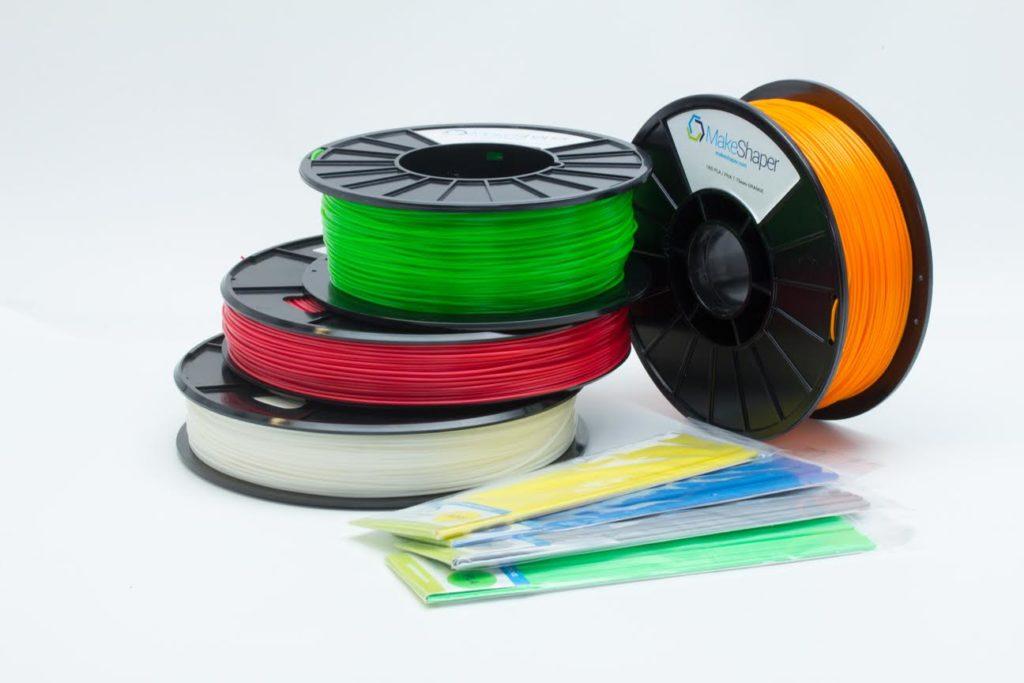 The North Carolina-based company wants to make sure that as 3D printers continue to improve, so do their filaments, so only the highest quality prints are delivered. The company is a subsidiary of Static Control Components, the largest supplier and manufacturer for the aftermarket imaging industry. MakeShaper puts their material through rigorous testing, including testing in both high and low humidity, a 3-axis laser that measures the filament constantly as it’s being extruded, and a torture test.
The North Carolina-based company wants to make sure that as 3D printers continue to improve, so do their filaments, so only the highest quality prints are delivered. The company is a subsidiary of Static Control Components, the largest supplier and manufacturer for the aftermarket imaging industry. MakeShaper puts their material through rigorous testing, including testing in both high and low humidity, a 3-axis laser that measures the filament constantly as it’s being extruded, and a torture test.
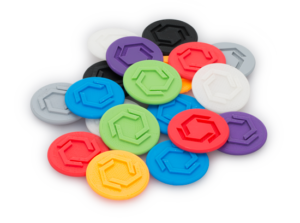 Along with the MakerBot Gen 5 filament options, the company also released a PLA/PHA filament blend, for consumers who want a material that prints like PLA, but is less brittle, and a PETG filament, that combines the strength and durability of ABS with the ease-of-use of PLA. The PETG features good layer adhesion, and produces prints with less shrinking and warping. They are both available in 1.75mm, with a variety of color options and spool sizes. MakeShaper also launched 2.85mm ABS filament sticks and PLA filament sticks for 3D pens, available in a range of colors. Discuss in the MakerBot forum at 3DPB.com.
Along with the MakerBot Gen 5 filament options, the company also released a PLA/PHA filament blend, for consumers who want a material that prints like PLA, but is less brittle, and a PETG filament, that combines the strength and durability of ABS with the ease-of-use of PLA. The PETG features good layer adhesion, and produces prints with less shrinking and warping. They are both available in 1.75mm, with a variety of color options and spool sizes. MakeShaper also launched 2.85mm ABS filament sticks and PLA filament sticks for 3D pens, available in a range of colors. Discuss in the MakerBot forum at 3DPB.com.
Subscribe to Our Email Newsletter
Stay up-to-date on all the latest news from the 3D printing industry and receive information and offers from third party vendors.
You May Also Like
3D Printed Heat Spreader Could Improve Efficiency of Electronics
The low-hanging fruit for decarbonization has long been improving the efficiency of existing systems, hence the justification for LED lights and ENERGY STAR certified appliances. While such minor moves are...
3D Printing News Unpeeled: Marine Gearboxes, 3D Printed Motors and $1.7 Million in Seed Funding
UK based Equipmake just released their Ampere-220 e-axle system. The system, which is meant for high performance electric cars, was similar to one released on the Ariel HIPERCAR. It has...
CEAD Unveils 36-Meter-Long 3D Printer for Abu Dhabi’s Al Seer Marine
CEAD, a Dutch original equipment manufacturer dedicated to large-format 3D printers, has unveiled what it claims to be the world’s largest robotic arm-based 3D printer. At 36 meters long and...
3D Printed Biocomposites Could Help Reduce Marine Plastic Pollution
Concerns about the impact of plastic litter and microplastics in the oceans are at the forefront of environmental study. For decades, the marine environment has suffered from the degradation of...




































